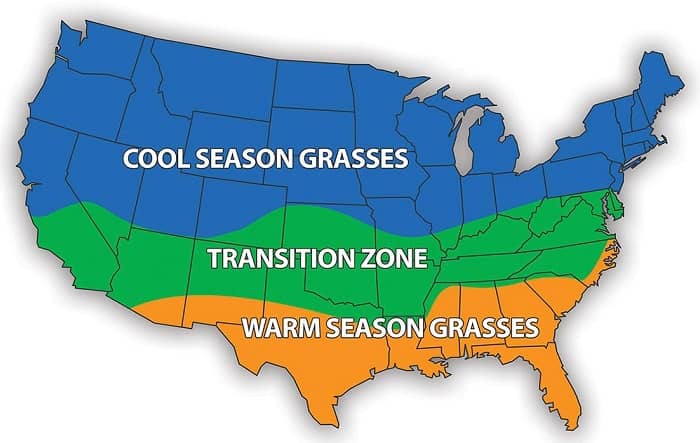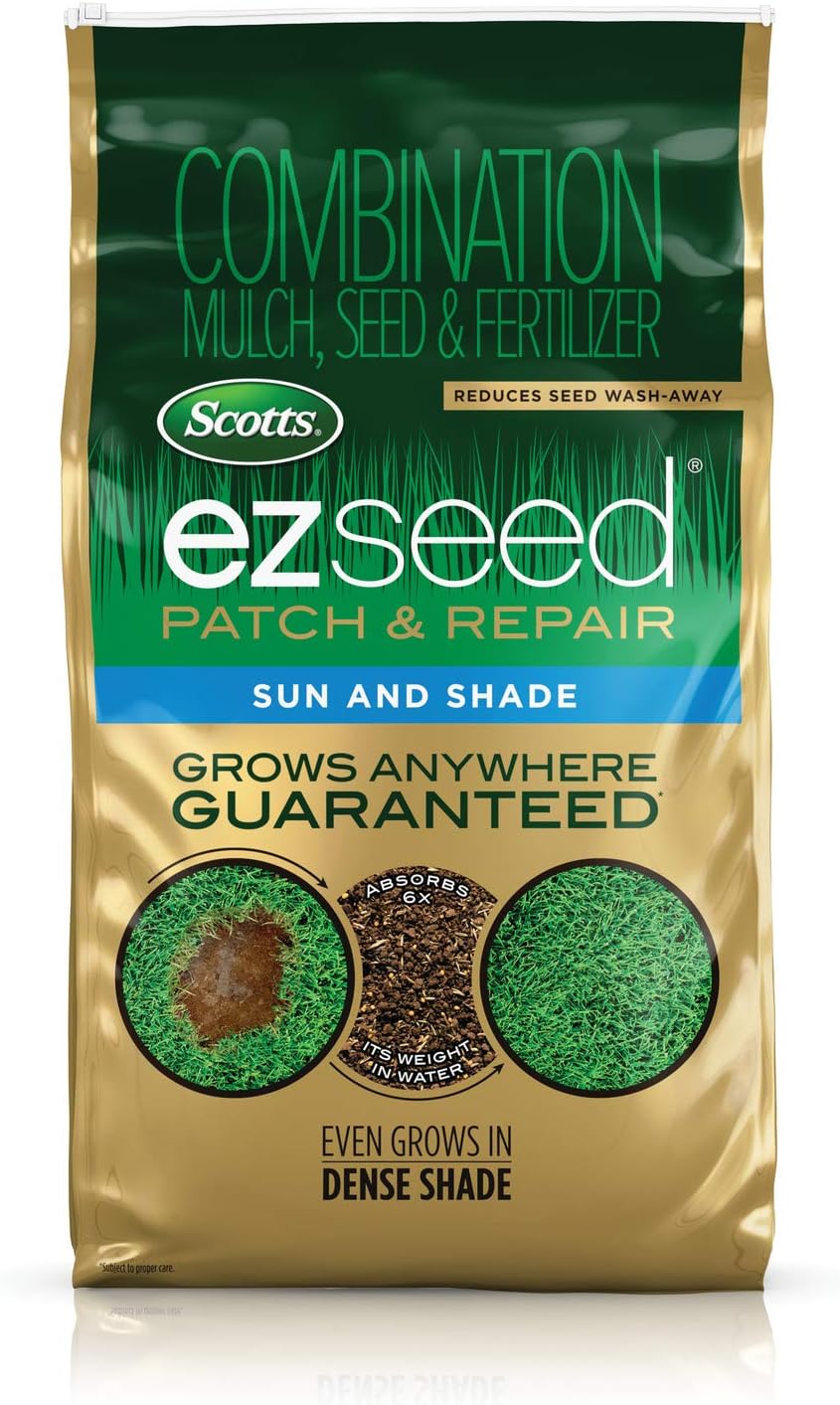I am pretty sure you’re thinking about how to grow new grass from seed in the summer and fall. When you have a lawn and want to take it to the next level, you must grow new grass from seed to fill bare spots or areas damaged by various works.
Growing new grass is not a tricky task; you can make it successful very smoothly. But all the time, it is not easy for you, or you can’t do it without a specific plan.
You need to consider many things in advance to make your work easy. It is essential to learn how to plant grass seeds in the least expensive way possible to transform your home or garden into a new lawn through seeding. It is the most satisfying task a homeowner can easily tackle.
How to grow new grass from seed easily and fast
You need to be patient when you are going to grow grass from seed. In this article, I will discuss the most effective methods for growing grass from seed in your lawn. Let’s go step by step to give your yard the most beautiful look.
Choose the best time and location of planting/schedule:

The most important factors in giving your lawn an evergreen appearance are the timing and location of planting. So, make a preplanned schedule to plan your grass through seed according to the plant hardiness zone.
The ideal time for planting your grass is before the grasses are in an actively growing period. It is essential to give it a kick-start in life. It allows you to establish your lawn itself and make it green as soon as possible. Usually, you can find two types of grass; and you need to approach different times of seeding based on your grass types. Two types of grasses are-
Warm-season grasses:
These types of grasses are mainly grown in tropical areas where there remain high temperatures (between 80º and 95º F). These are actively grown in hot summer. So, you need to plant seeds in late spring, which will do best for your lawn. These grass seeds can establish and germinate properly in late spring when the weather isn’t gradually hot. These grass enjoy and capitalize on the hot weather in summer. So, these grasses can reestablish in summer when they are actively growing condition.
The most common warm-season grasses are bahia, bermuda, centipede, St. Augustine, and zoysia.

Cool-season grasses:
These types of grasses are mainly grown in cool weather areas where the temperature remains low (between 60° and 70° F). These are actively grown in autumn or winter. So, you need to plant grass seeds in late summer or early autumn, whichever is best for your lawn.
The grass seeds need excellent warm soil to germinate properly. These grasses are enjoying the entire autumn and winter cool period and remain actively growing condition. The cool weather can reestablish your lawn perfectly and make it look better and evergreen than before.
The most common cool-season grasses are kentucky bluegrass, perennial ryegrass, fine fescue, and tall fescue.

Test your soil and improve it:
For getting more effective results in growing new grass, you need to test your soil first. It can take up to two weeks to get the test results back, but you can get the exact soil conditions. It makes your work easier by saving you a lot of time and effort.
The pH level and amount of organic matter give you an idea of how much time your new seed needs to grow.
You need to send a soil sample to the lab for a soil test specialist, and they will give you the results and recommendations. After that, you need to contact an extension agent who can help you by providing information on which elements you need to supply in your soil.
If you notice that the pH level and amount of organic matter are not suitable, improve it by supplying the recommended materials. If you don’t improve your soil conditions, you will get poor quality grass, and all your efforts are in vain.
Remove the old sod and weeds:
It is also an important task; you need to remove your old sod weeds to get a consistent look at your lawn. All your newly grown grass can not compete with the old sod and weeds. So, you don’t get your desired result. If you have a small lawn, you can remove all old sod and weeds by hand. Use a rake or shovels and dig out the old one.
If you plan to remove all your vegetation, you need to use non-selective herbicides. It can kill all types of plants that come in contact with it. So, you need to use it and follow the instructions carefully. Don’t overspray it.
Don’t overdo which methods you follow to remove old sod and weeds. It is essential to preserve the topsoil in precious good condition.
Loosen the soil:
After removing all your old sod and grass, you need to loosen your soil by keeping the topsoil in the right conditions. Don’t turn the topsoil over; just break it up so that the new grass can easily grow and spread through for water and nutrients.
If you have a small lawn, use a digging fork to loosen the soil. For a large area, use a core aerator or you can use a liquid lawn aerator. You can rent it or hire a lawn care company to perform it for you. You may notice that your lawn has some low spots; to fill these low spots, use a half and half mixture of sand and topsoil.
Select and buy the best quality seed:
The best quality of seed offers the best types of grass. On the other hand, low-quality seed leads to a low-quality yard; it is the universal truth. To find the best quality seed, you have to look for NTEP (National Turf Evaluation Program)-rated varieties, which are from a very reliable source rated by NTEP. You can get the best-quality green grass color, disease and insect resistance, and drought-tolerant grass from these sources.
The grass seeds’ price is less than other seeds, and every grass seed bag has a label attached, which is known as a seed tag. This tag tells you the variety of types of grass inside, germination rate, and weed seed percentage. When you notice that the weed seeds germinate, but grass doesn’t germinate, you assure that the grass seed is of poor quality.

Local retailers can help you find grass seed that is appropriate for your area. Ensure the grass types are either effective for the winter cold or effective for the summer heat. You have to choose the grass types according to your locality, soil type, and land position. If your lawn has lots of trees and shade, you have to select a shade-tolerant variety. Look at the label of the grass seed to see if it is specifically for shady lawns.
How to identify and read grass seed labels:
You must read the grass seed labels carefully to get an approximate idea of what is going on and what to do next. Carefully noticed the following information on the label-
- The name of the variety and the amount of weight by percent.
- Other crop’s seeds and their weight percent.
- Any inert materials and their weight percent
- Percent of weed seed (if any)
- The rate of germination (higher percentage means there is a better chance of growing almost all the seeds)
You can also get an idea of how much grass seed you needed from the label instructions for your lawn. Here you also get the rate of dropping seed for the spreader based on its types.
Preparation of land:
Before seeding after removing old sod and weeds, you need to clear the land by removing any particles that might interfere with seed growth. Carefully remove the rocks, debris, stables, bricks, glasses, and other heavy particles left behind by construction or nature. Use a garden rake to smooth the soil surface.
You must avoid using any weed killer before and after seeding; otherwise, it can directly, or its residues can kill the grass very severely. If it is necessary to use weed killers, wait up to three weeks after seeding or before three weeks.
Fertilization:
Fertilization is essential for growing your grass correctly. Plants need nutrients from the soil to develop and complete their life cycle. Different types of essential nutrients can be supplied from different types of fertilizer. Fertilization means feeding your plants. So, you need to meet the needs by using different fertilizers, especially the N-P-K ratios products. You need to supply the proper amount of nutrients for your grass for up to three months.
Use a spreader before sowing your seeds for uniform distribution of nutrients. Many packages offer you how to fix the spreader setting and how much fertilizer you need to use. Many specialists recommend using N-P-K 22-23-4 or 34-0-4 ratios products. Both products have a high amount of nitrogen so, it protects against nitrogen loss to the environment.
Distribute your grass seed evenly:
After fertilization, you need to spread your grass seed with a lawn spreader to distribute the seed evenly in a new area. You need to follow the seed bag level instructions carefully; here you will get some institutions on how to fix spreader settings and the seeding rate for your chosen seed (measured in grams per square meter). You can purchase a broadcast spreader to spread your seeds quickly and accurately.

Fill your machine halfway with seeds to practice seeding. To get a uniform distribution of seeds, roll the machine vice-versa, once half in one direction and once in the opposite direction.
After sowing your seed, rake the area to allow the seed into the soil. The seed needs to get into ⅛ to ¼ inch deep in the soil so that it can germinate well. Light is essential for proper germination, so carefully rake the soil after seeding, so the grass seed doesn’t reach very deep.
Water your seed:
Watering is the most crucial part of germination. It thrives your lawn grass seed perfectly. Water your lawn once or twice a day so that the soil surface remains ½ inches moist. You must be careful when watering. Avoid overwatering. It can create waterlogged conditions. Moist soil helps to germinate seed, and the grass grows well to mowing height.
Germination time mainly depends on different types of grass. Many grass seeds germinate between 5 to 21 days. Grass seed tags will give you a promising time of germination. Make sure to a regular water scheduling as your grass grows promptly. It needs 1 inch of water every week to properly establish a lawn. You must make sure that amount is from either irrigation or rainfall.
Proper care of your lawn:
As your newly born lawn grass grows nicely, it needs proper care to go for mowing height. Wait for the seeds to be sprouting. First mowing is recommended when new grass grows about 11/2 times the mowing height.
Mowing is also a crucial part of lawn care tasks. You need to follow the best mowing practices. Don’t give up on removing 13 inches of grass at a time. It hampers the photosynthesis process occurring in grass leaves. Leaves can not produce foods properly, and grassroots lose their energy reserves. Follow the proper lawn care schedule to get the best result.
| Duties | Ideal Time | Acceptable Time |
| Aeration | May and Late-August to Mid-October | Mid-April t Mid-November |
| Broadleaf control | Mid-May to Mid-June and Mid-August to Early-October | May to October |
| Fertilization | Late-April to May and Late-June to September | Late-April to October |
| Grub control | Late-May to Mid-June | Late-April to June |
| Irrigation | April to Mid- November | April to Mid- November |
| Overseeding | Early-October to Mid-September | May, June, Late-September to Late-October, and Mid-November to Mid-December |
| Pre-emergent control | Late-April to Late-May | April, May to Late-June |
| Sodding | May to Late-June, Early-August to Early-October | Early-April to June and Early-August to Early-November |
| Soil testing | March, April, and November | May to October |
You are recommended to mow your lawn when it reaches 8-10cm for the first time. You must avoid using any weed killers or fertilizers on your newly born grass. Wait using these substances until you mow your lawn three or four times.
Protect your lawn with a fence until it is established properly. Keep your kids and pets away from the yard at this time. A temporary fence makes your job easy to protect your newborn grass.
All of your dreams will almost certainly come true once your new grass grows well. For the next job, you need to mow your lawn regularly and follow some other tasks. After three to four times of trimming, the roots get ready for some traffic. Don’t worry about that; always enjoy all the benefits at the first growing season.
Final thoughts:
A well-established lawn is a symbol of aestheticism. It offers you a green backyard in front of your house and reconnects you with nature, family, friends, and neighbors as well. After seeding, you can make your dreams come true. A few simple steps are all that is required to maintain your lawn. Are you waiting for that? Stay tuned with us. I swear I will give you the most valuable information and techniques for being a pro in lawn care.



